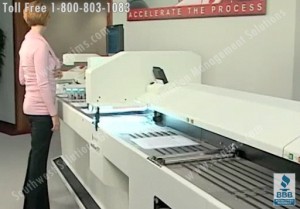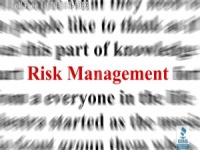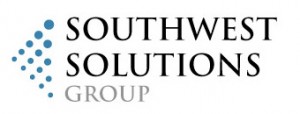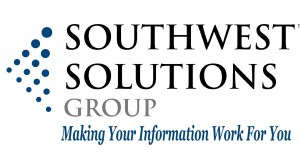Document Management Software
Digital Imaging Systems for Litigation Support
 Digital imaging technology is increasingly important in litigation support. Law Firms that use digital imaging technology realize immediate performance and productivity gains that improve the management of litigation cases, evidentiary documents, discovery files, due diligence records and boilerplate documents. Southwest Solutions Group is a leading provider of secure high resolution scanning, document coding, Bates stamping and full page OCR scans to assist your law firm.
Digital imaging technology is increasingly important in litigation support. Law Firms that use digital imaging technology realize immediate performance and productivity gains that improve the management of litigation cases, evidentiary documents, discovery files, due diligence records and boilerplate documents. Southwest Solutions Group is a leading provider of secure high resolution scanning, document coding, Bates stamping and full page OCR scans to assist your law firm.
Benefits of Converting to Digital Imaging
There are numerous benefits to converting to digital imaging. First and foremost, no more lost or misfiled documents found in paper-based filing systems. Also, many attorneys have heavy travel schedules, yet they still need access to vital documents. Because our digital filing systems provide secure remote access to information, you can quickly retrieve files when and where they are needed on WIFI connected laptops and handheld devices (Blackberry, iPhone, Androids) safely and securely. Some other cost savings and productivity benefits of converting your  documents to digital imaging are:
documents to digital imaging are:
• Cost savings by reducing the paper file storage requirements will enable your organization to grow, reduce costs, and use floor space for profitable purposes • Cost savings of eliminating off-site storage and document retrieval charges • Increase efficiencies in billable hours and administrative overhead cost savings of making copies and faxing documents • Increase productivity through remote file access using a secure web connection and between offices and departments in different locations (256 Bit SSL Encryption) • Protect your documents from catastrophic loss with a secure disaster recovery plan that provides secure off-site backup and access to information in the event of a disaster • Document workflow, inbound fax receiving, document redaction, editing, and Bates stamping, document consolidation • Integration with your existing Practice Management or Document Management systems • Supplement in house litigation support staff for large cases and remote projects • Unlimited users, document types, and files with no upfront fees • Compatible with most browsers and devices, including iPad, Android, Blackberry, and Mac
Test Our Digital Imaging Services for Free
Our free trial offer includes a full featured document imaging configuration for you to use free for 60 days. There are no restrictions on use within your organization. In addition, we will scan a sample set of files and load them into your viewer to demonstrate the imaging quality of scanned files. We guarantee that our scanned files will be compatible with your practice management and litigation support application.
Why Southwest Solutions Group for Your Digital Imaging System
Southwest Solutions Group is more than a digital imaging conversion company. Southwest Solutions Group has been providing filing products and records management consulting to law firms since 1969. Because we have been helping law firms for years with their paper based filing systems, we understand the flow of critical business documents throughout their lifecycle, from point of creation to final disposition, which offers customers reduced risk and improved operational efficiencies with a verifiable return on investment. We have many qualified information specialists to help you understand the process and protect you from common pitfalls when converting from paper based filing to a document imaging system.
Additional Services by Southwest Solutions Group
We offer many information management services including: • Master planning for converting to document imaging • Document Blowbacks (printing), Bates Stamping. Conversion of digital files (images, worksheets, emails) • Output of load files afro Concordance and other Litigation Support Applications • Backfile scanning of inactive and active records • On-site scanning • High quality production scanning • Packing, purging, and shredding services • Document backup services
Contact us today for more information about our digital imaging free trial at (800) 803-1083 or visit http://www.ssgims.com/legal/
Developing and Managing the Lifecycle of Records
 Importance of Records Management
Importance of Records Management
Records management systems are typically developed in one of two ways. First, there’s the approach most companies take. They start with a very basic filing system that serves the purpose of managing a small collection of records. Often, an entry level staff member with no records management background is tasked with creating the filing system in an attempt to reduce the labor costs associated with the project.
These individuals will use a combination of whatever methods and tools they are most familiar with (top tab folders, alphabetical filing, handwritten labels, basic color coding, etc). As the records continue to accumulate, the filing system becomes more unwieldy and error prone. Things get lost or misfiled, records that should have been discarded long ago keep clogging up the system, and finding a file quickly becomes difficult.
The other approach is to carefully design a filing system that accounts for how files and other information will be managed throughout their lifecycle, regardless of how extensive the records become. Fortunately, it’s never too late to switch from an outdated and inefficient filing system to an information management solution that really meets your company’s needs.
Information Compliance Risks
From security to retention, federal and state regulatory agencies have very strict rules for how businesses manage their information and records. Missing documents, incomplete records, or unsecured files are a big liability. Implementing a records management program with properly designed records management software establishes and enforces internal business guidelines that meet government standards. For example, you can set up record retention and disposition schedules to eliminate records that are past their retention date. These practices increase your level of compliance and reduce your risk of government fines and penalties in the event of an audit.
 Advanced Technology Reduces Cost
Advanced Technology Reduces Cost
Various forms of records management technologies will support best practices for managing the lifecycle of records. Technologies like file labeling software, barcode scanning and RFID (Radio Frequency Identification) tagging allows you to track and manage a large number of records quickly and accurately. Paired with the right software solution, you can create a seamless records management system that enhances your ability to create, label, review, inventory, transfer, and dispose of records efficiently. Records management software cuts down on the time you spend looking for (or recreating) missing records. Records management software has advanced security features allowing you to set and restrict access to appropriate personnel. Since a comprehensive audit trail is built in to the technology, you have a complete history showing when each record was create and accessed throughout its lifecycle.
Assessing Your Records and Information Management System
Need help assessing your records and information management system? Southwest Solutions Group provides a free 30 minute phone assessment of your filing system. Call today at 1-800-803-1083 for your free assessment or contact us by email at info@ssgims.com. We have the knowledge, expertise, and products to improve your records management process, no matter what stage it is in!
Click here to see a list of our records management consulting services.
10 Steps to Converting Electronic Medical Records (EMR)
Why Electronic Medical Records (EMR)?
 Healthcare providers all across the U.S. are migrating their medical charts to Electronic Medical Records (EMR) to increase record accuracy, decrease waste, eliminate costly storage space, and improve patient care. Hospitals are also seeking to take advantage of government incentives under the American Recovery and Reinvestment Act (ARRA). Right now, everyone is focusing on the “carrot” of payments they can receive by implementing EMR. But the “stick” comes out in 2015, when hospitals that don’t meet federal guidelines for paperless records may be penalized with reduced Medicare reimbursements.
Healthcare providers all across the U.S. are migrating their medical charts to Electronic Medical Records (EMR) to increase record accuracy, decrease waste, eliminate costly storage space, and improve patient care. Hospitals are also seeking to take advantage of government incentives under the American Recovery and Reinvestment Act (ARRA). Right now, everyone is focusing on the “carrot” of payments they can receive by implementing EMR. But the “stick” comes out in 2015, when hospitals that don’t meet federal guidelines for paperless records may be penalized with reduced Medicare reimbursements.
What’s Holding Healthcare Organizations Back from Using EMR?
 The new government rules to EMR are confusing and picking the right document imaging software system is challenging. Plus, there is significant expense and disruption involved when you make such a big change in how medical records are handled. It’s just not feasible to expect hospitals to do this on their own without expert guidance from information management professionals. Software vendors are happy to sell you imaging hardware and advise you on how to install image software on your computer network; but that doesn’t help with the real-life obstacles you will face in converting your medical file charts to electronic images that can be located when you need them.
The new government rules to EMR are confusing and picking the right document imaging software system is challenging. Plus, there is significant expense and disruption involved when you make such a big change in how medical records are handled. It’s just not feasible to expect hospitals to do this on their own without expert guidance from information management professionals. Software vendors are happy to sell you imaging hardware and advise you on how to install image software on your computer network; but that doesn’t help with the real-life obstacles you will face in converting your medical file charts to electronic images that can be located when you need them.
 Getting Help Converting Electronic Medical Records
Getting Help Converting Electronic Medical Records
Converting medical records to a document imaging system takes the help of a qualified information management specialist who has experience in the EMR imaging process and government requirements. A qualified information management specialist will help you understand the process and avoid common mistakes that can set your organization back. For example, EMR compatible medical records scanning involves more than simply scanning records and uploading a pdf of a patient’s chart into a database. If you don’t have federally approved quality controls in place, you may end up with a bunch of electronic records that are not considered true originals. That’s an excuse Medicare can use to deny payment. Below is an overview of ten steps to converting your medical documents to Electronic Medical Records.
10 Steps to Converting Your Paper Medical Records to EMR
1. Survey – Review your current filing system to discover the best documents to image 2. Plan – Develop a master plan to map and document every step of the conversion process including establishing your document indexing requirements 3. Pack & Manifest – Box and label medical charts/records to be imaged so they can be tracked throughout the conversion process 4. Secure Transportation – Ship record boxes with documents to be scanned and imaged via a bonded courier directly to a secure image conversion facility 5. Validate Receipt – Have the image conversion facility provide receipt of shipment and confirmation documentation of all documents are present 6. Prep & Scanning – The image conversion contractor should prep documents, removing staples and repairing any damaged records before scanning documents with a high quality production scanners to ensure a high quality, clear and complete scan of each file 7. Indexing – Document The image conversion contractor should index documents according to your specifications established in Step Two 8. Quality Control – Request a sampling of imaged documents to ensure scanning and indexing accuracy of each record 9. Output – Upload the scanned records into your EMR software system or supply on CD/DVD if requested 10. Store or Shred – Provide storage, shredding, or secure shipping instructions for paper records
Visit www.ssgims.com or call 1-800-803-1083 for more information on document imaging consulting and conversion services.
Conducting A Records and Information Management Audit
 Records and Information Management Audit
Records and Information Management Audit
With the influx of compliance, e-discovery and retention policies, many organizations are desperately seeking to stifle their RIM (Records & Information Management) woes. More often than not, organizations try to fix information management problems at the end of the life cycle without understanding the beginning of the records creation process. Implementing a RIM audit program will help provide solutions that will alleviate record keeping issues at the end of the life cycle. Whether you conduct a RIM inventory/audit yourself or hire an outside resource, the following is a minimum starting place for development of a sound RIM audit program.
 What Documents Are Being Created?
What Documents Are Being Created?
Identify file/document types within each department that are being created. Often times you will find they are not necessarily in line with your retention schedule; something you don’t want to find out in a litigation scenario.
How Are Records Being Created?
How are these records being created and indexed? Are electronic documents printed and filed? Understanding how records are created plays a significant role in solving the mystery of how to manage the information and develop a consistent process that takes the guesswork away from the end user and defines the life cycle of the record. Doing it right in the beginning of the life cycle allows technology solutions to take care of it at the end.
 Where Are Documents Being Stored?
Where Are Documents Being Stored?
Where are the documents being stored? Are there duplicate copies unaccounted for? Lack of confidence in corporate record policies and process drives us to create multiple copies of documents so that we always have access. The problem is that when it’s time to apply retention schedules, how do we ensure that we have included the plethora of rogue copies? Understanding where these documents are, and implementing a process for the creation and retrieval of them, along with good training, will help alleviate this issue.
When Does a Record Become a Record?
Too often, documents are neither indexed nor classified until the middle or end of the life cycle. They live in a limbo state often referred to as “working documents”. Documenting and understanding when your end users create records will help define your record policy and ensure that the organizations intellectual property is identified and secured.
Why Do We Do It This Way?
Undoubtedly the most important question to consider when conducting the audit is “why”! “Why do you do it this way?” And the most common answer is….”Because we’ve always done it that way!” Understanding “why” is the first step in improving your records management program and changing the culture of your organization.
Conducting a RIM Audit will provide upper management the information they need to make better enterprise wide decisions for your business.
For more information about how Southwest Solutions Group can help you through the maze of Records and Information Management, call 1-800-803-1083 or click here to contact us.

Pharmaceutical Information Management Software And Solutions
Records Management Regulatory Compliance
 In the highly regulated and competitive pharmaceutical industry, corporate records management programs have become indispensable to the continued well-being of the organization. Seeking industry recognized compliance, pharmaceutical companies actively seek records management software and services to assist them in their efforts. Inherent in these policies are the mandatory ability to restrict, locate, track, and audit access to all such records.
In the highly regulated and competitive pharmaceutical industry, corporate records management programs have become indispensable to the continued well-being of the organization. Seeking industry recognized compliance, pharmaceutical companies actively seek records management software and services to assist them in their efforts. Inherent in these policies are the mandatory ability to restrict, locate, track, and audit access to all such records.
Managing the Life Cycle of Documents
 Under these compliance requirements, the pharmaceutical industry is turning to companies like Southwest Solutions Group’s Information Management Division and Infolinx to ensure regulatory compliance and to establish programs reflecting best records management practices for documents and information throughout their life cycle. For example, we recently completed a project for a global biopharmaceutical corporation whose products are marketed in over 50 countries worldwide. Southwest Solutions Group partnered with Infolinx WEB, to implement integrated life-cycle tracking software to manage their pharmaceutical records, including product batch and history files, research notebooks, and intellectual property. According to Anna Stratton, Director of Information Management Solutions for Southwest Solutions Group, “This implementation was unique because it was a model team effort, bringing together the expertise of industry leaders in storage, consulting services and technology.”
Under these compliance requirements, the pharmaceutical industry is turning to companies like Southwest Solutions Group’s Information Management Division and Infolinx to ensure regulatory compliance and to establish programs reflecting best records management practices for documents and information throughout their life cycle. For example, we recently completed a project for a global biopharmaceutical corporation whose products are marketed in over 50 countries worldwide. Southwest Solutions Group partnered with Infolinx WEB, to implement integrated life-cycle tracking software to manage their pharmaceutical records, including product batch and history files, research notebooks, and intellectual property. According to Anna Stratton, Director of Information Management Solutions for Southwest Solutions Group, “This implementation was unique because it was a model team effort, bringing together the expertise of industry leaders in storage, consulting services and technology.”
Records Management Software and Service Solutions
Having provided records management consultation and software services since 1969, Southwest Solutions Group’s Information Management Division has considerable experience helping pharmaceutical providers implement strategic and scalable records management solutions, meeting today’s stringent requirements such as Sarbanes-Oxley and HIPAA. We manage critical business documents from point of creation through final disposition, offering customers reduced risk and improved operational efficiencies with a verifiable return on investment.
 For additional information on document software and services please visit Southwest Solutions Group IMS Division at www.ssgims.com.
For additional information on document software and services please visit Southwest Solutions Group IMS Division at www.ssgims.com.
Ensuring SUCCESSFUL Barcode, RFID and Digital Implementation

Barcode, RFID & Digital Technology Plan is KEY to SUCCESS
Innovation tracking and management technologies can make a huge difference in your bottom line whether it is for inventory, assets or records and information. The key to a successful implementation is identifying and improving the related business processes. Attaching a barcode or RFID tag to an item or putting document through a scanner is only a small part of the solution. Solution providers should be able to perform a survey and analysis of your existing system to first identify the root of deficiencies and provide a full life cycle overview. Process improvement in partnership with innovative technologies is the key to your return on investment and bottom line improvements. It is also important to identify which technology is best for your business function. Asset Management, Inventory, Digital Document and Archive Management are key business units that can benefit from a single and/or a combination of technologies and many systems can be expanded to include multiple departments or enterprise-wide. Technology can be a powerful tool when implemented to enhance your overall business function and work flow.
Click here to learn more about our Total Solution Integration & Implementation Services






